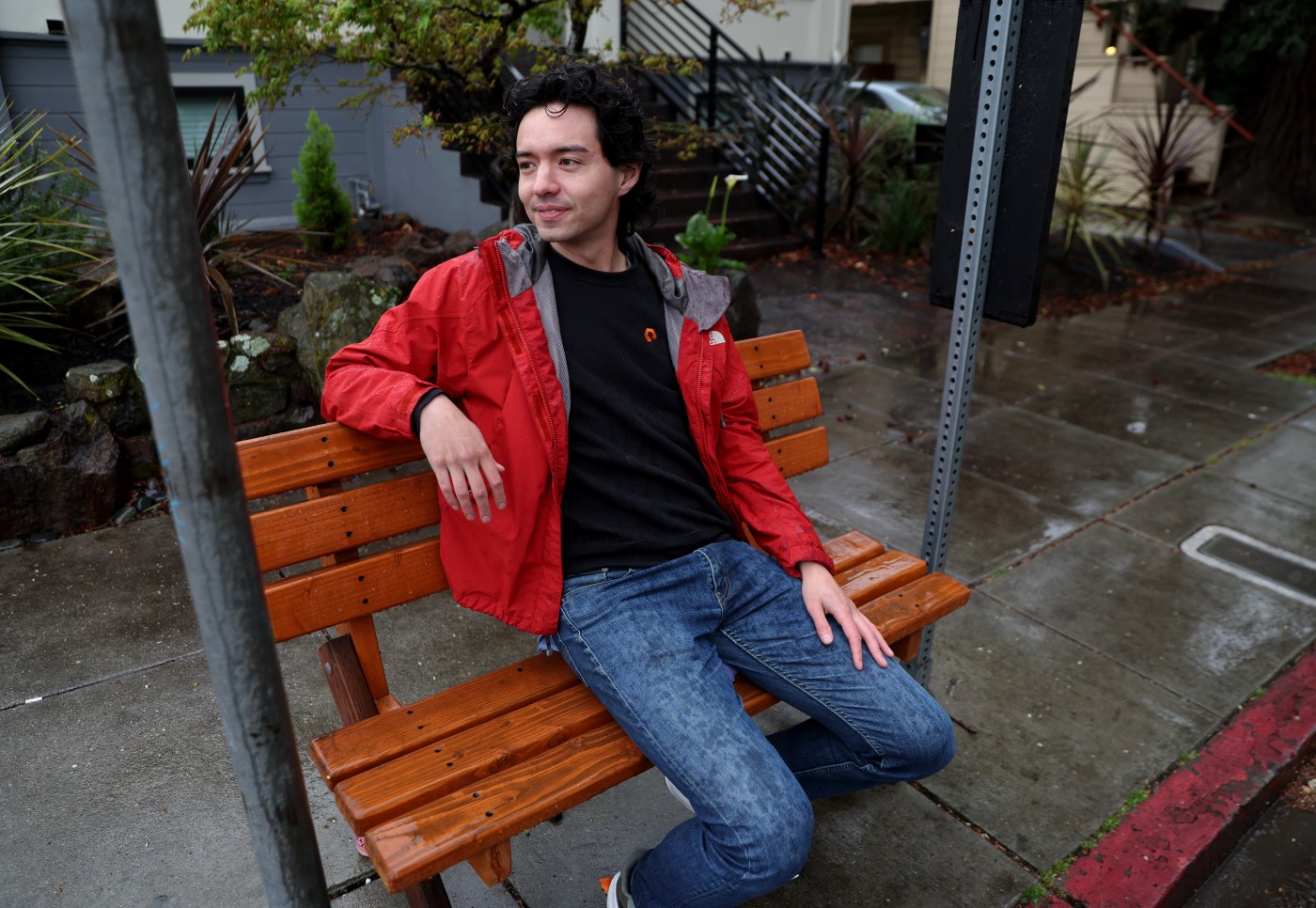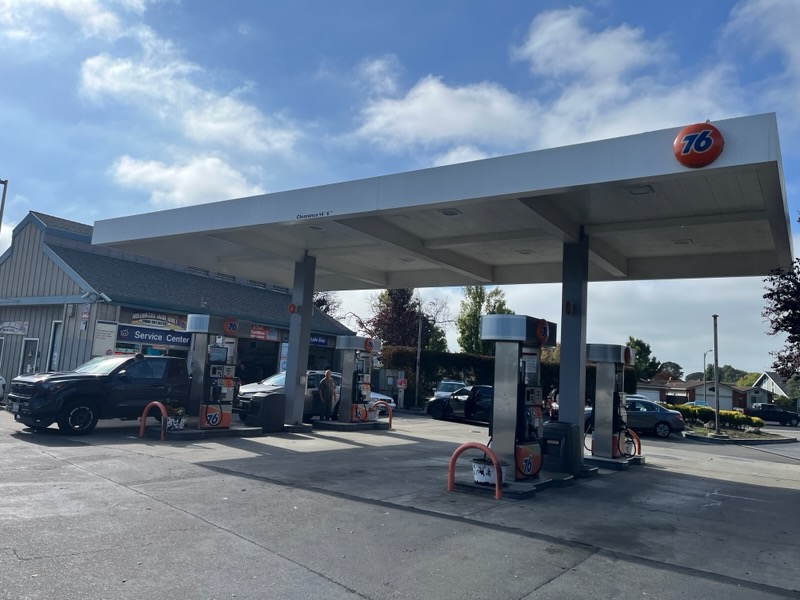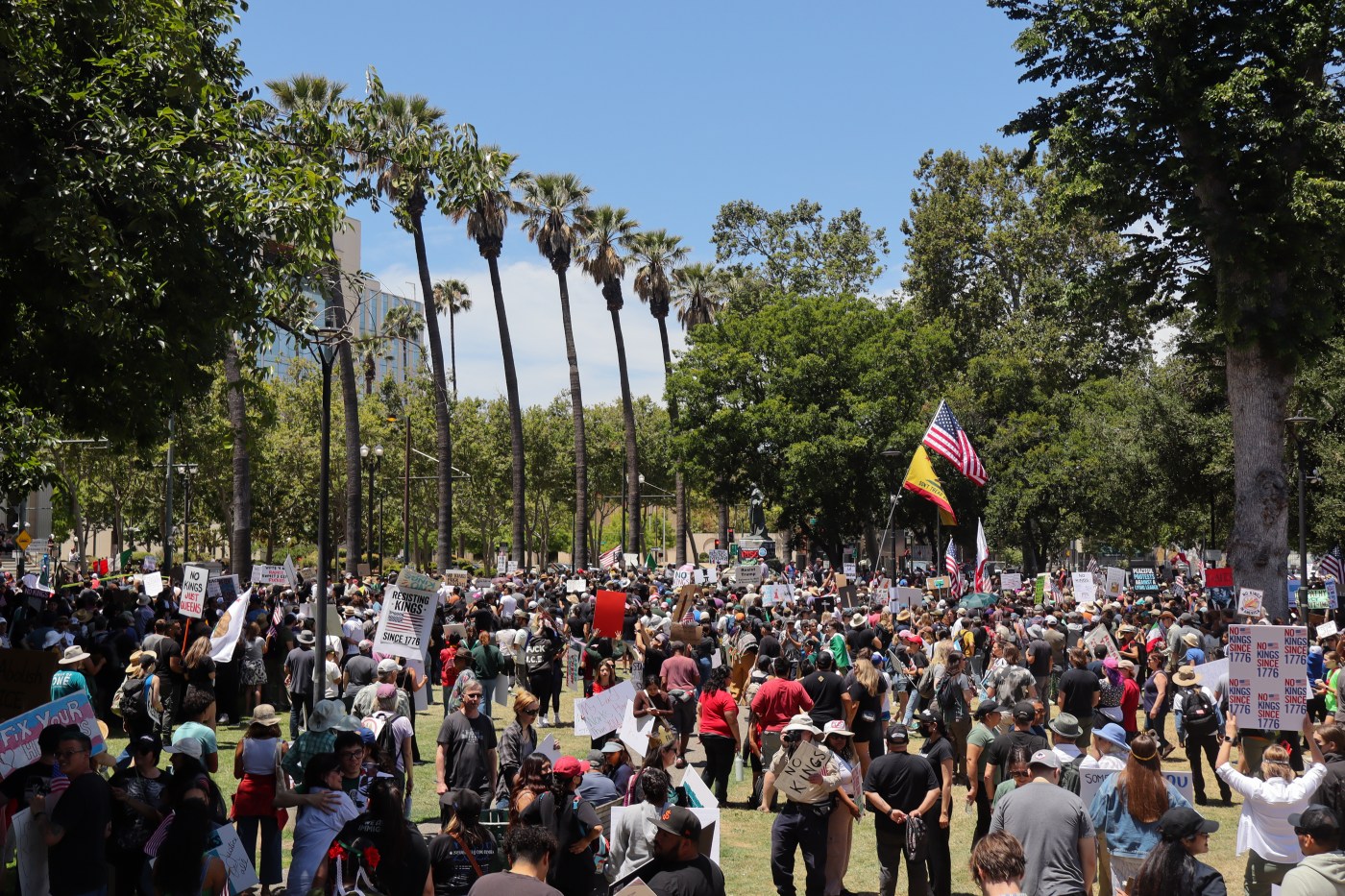Mingwei Samuel is a 27-year-old research software engineer, living with his parents in Piedmont, close to where Piedmont Ave. runs into Oakland. When he’s not biking around the Bay Area, he has been helping organize a volunteer mini public works department of sorts, building and installing bus benches around the East Bay.
Q: Where did this idea come from?
A: In early 2023, I built my first bench. I had seen and heard about the ones in the Richmond District in San Francisco, made by Chris Duderstadt. It’s a very easy-to-make design as far as woodworking goes.
Related Articles
BART train hits, kills person at Fremont station
San Jose housing project will switch to affordable units
Los Gatos Trailhead Connector Bridge opening was 20 years in the making
Mathews: BART, L.A. Metro could learn from San Diego County’s Sprinter rail
Equipment problem causes major BART disruptions
So I thought I would do that for fun, and I could give it to the community in San Francisco. I know a lot of people in the bike and transit community there. So that’s what I did. And that bench is out in San Francisco somewhere, I think on Page Street.
And then I built the second bench, but I didn’t really know where to put it. In mid-2023, I saw a tweet that Darrell Owens (another Bay Area local and public transit advocate) made about his neighbor who was sitting on the curb post-surgery waiting for the bus in Berkeley. So I thought, “Oh, I can put my bench there.”
It took me a little while, but in December I biked the bench out there and just cable locked it to the pole, and posted it to Twitter. That tweet did much better than I expected — it sort of blew up and got a lot of attention. That’s the short version.
Q: How can interested people get involved in your organization?
A: I wouldn’t necessarily call it an organization, in that there’s not any formal hierarchy, just a bunch of people together who want to build benches and make the world a little nicer. Anyone who cares about this issue and wants to contribute their time, or help in any way, can join us and be part of the group.
More recently, we’ve been throwing these bench-building weekend parties, where we build a bunch of benches at a volunteer’s house and put them out over the course of a two-day weekend. We’ve done that twice now.
That’s an easy way for people with no experience to get involved in the actual building process.
You can go to the website bench.builders. There’s a “Join Us” button.
Q: How did you learn how to build the benches? Is it hard? Did you teach yourself?
A: I taught myself, essentially, but not fully. I went to the public bench project website and Duderstadt has a guide on how to build his bench design.
As far as the practicality, it’s not too hard. You just need to have the design traced out onto the wood, cut the wood with a jigsaw or circular saw, drill the holes and bolt everything together and screw everything together. There’s no particularly hard techniques as far as woodworking goes.
It’s a very good design, simple to build.
Q: How many benches have you built? And how many people have been involved?
A: The most recent build day was in early March and we had roughly 30 people, ages 16 to 73, who helped build 12 benches.
The previous build in July had a similar number of people. The core people have been Darrell and I, building benches on our own.
We have 77 entries for benches we built, but some of those include refurbishing old benches, so about 70 unique benches built.
Q: Why benches? Is it personal, or was it more inspired by that tweet that you saw?
A: I try to get around mainly by bicycle and BART, and sometimes the bus.
Transit is very important to me, and it’s important to the world for slowing climate change and creating sustainable cities and building livable cities. The quality of bus stops is quite bad, frankly disrespectful.
I think this is a basic amenity that should be provided. Transit riders are not treated like people, really. They need to sit down and wait, especially as service gets cut, and they are going have to wait longer and longer at these empty, barren bus stops.
Q: What’s been the response from local authorities?
A: Technically, the cities are in charge of bus stop infrastructure and street furniture.
We’ve had AC Transit directors who approve and support it. In terms of cities, it’s been a little more nuanced.
The first bench was in Berkeley, and they quickly removed the bench and replaced it with an official bench. But then we continued to add more benches, and it turns out they only had the one bench in stock so they can’t replace the rest of our benches.
We got some feedback from an inspector and he had some suggestions about how we could make the benches more accessible and compliant. One of the main things was that when we just cable-locked them, they could move or shift. Now they are bolted down, just like any other street furniture would be.
Q: How do you decide where to put the benches?
A: We want the benches to have the most impact possible, so we want to prioritize stops that have a lot of boardings. You can request data from AC Transit, so I have some 2023 data, it’s not perfect, but it works pretty well.
Unfortunately, not every sidewalk has enough room to fit a bench. And we do have to make sure that there’s enough room for wheelchairs to go by, and the wheelchair ramp to deploy from the bus.
There are some AC Transit guidelines that we try to follow, but the reality is that a lot of the bus stops that are officially furnished do not follow the guidelines, but we are trying to do our best not to create problems for people.
Q: What is the response from the public?
A: The reactions are overwhelmingly positive from people. It’s easy to get bogged down by the few negatives, but whenever we’re installing benches and people walk by, they’re always super, super excited and happy to see that.
So that’s always very cool.
MINGWEI SAMUEL
Title: Organizer with bench.builders
Age: 27
Residence: Piedmont, CA
Education: Department of Electrical Engineering and Computer Sciences at UC Berkeley
FIVE THINGS TO KNOW ABOUT MINGWEI SAMUEL
He also helps to organize the East Bay Bike Party.
Built a portable waterproof speaker and a bench-carrying trailer for his bike adventures.
His name in Chinese means “great intellect.”
His bench tweet was not his first time going viral; he once made a video about the access tunnels for the Bay Bridge toll plaza workers that went viral.
Rust is his favorite programming language.





